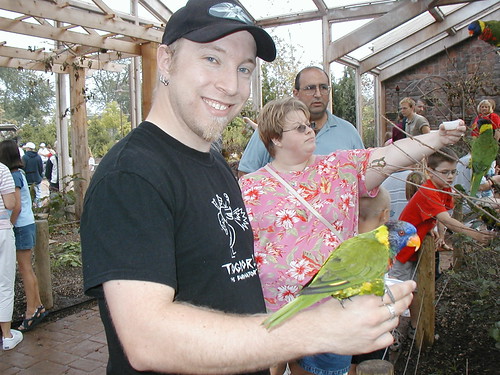A couple friends and I went exploring the NW part of the state yesterday, with some pretty good finds. Our first stop was the recently decommissioned gravel pit operation outside of New Hampshire along US 33 in Auglaize County, where someone reported Cackling and Ross’s Geese in with Canada and Snow Geese. We found the flock on one of the ponds, but it got up before we could sort through them and landed in a nearby field. Fortunately, this probably afforded us even better looks at the birds. We weren’t able to pick out any Cackling Geese from the Canadas, but amongst 25 Snow Geese (both blue and white phases) were three white phase ROSS’S GEESE. The Canada Geese included some darker and smaller than usual individuals that people better versed with the subspecies of Canada Goose might want to look at. A Northern Harrier flew over the pond, but didn’t seem to faze any of the Mallards and Green-winged Teals still there.
Our next stop were the Lima Reservoirs, which featured Ruddy Ducks as the main bird. Also present were some Bufflehead and Hooded Mergansers. We looked for Snow Buntings along the dikes but did not see any. Curiously, we saw another Northern Harrier flying quickly over the reservoirs.
On our way to the Oak Openings, we stopped at Bluffton to see the Rufuous Hummingbird (number 246), which was on the feeder as we rolled up, then flew off. We then observed a kettle of about 8 Red-tailed Hawks and a single Turkey Vulture at the Monclovia exit off 475.
Our stop at Oak Openings was great. It was the first visit to this metropark for me, and Dan Sanders pointed out all the spots where good birds had been observed in the past. Our goal was the nature center feeders, where we spent about 45 minutes. The feeders were very lively, with a male and female Purple Finch (number 247), numerous American Goldfinches, several White-breasted Nuthatches, at least 3 Red-breasted Nuthatches, a Blue Jay, Red-bellied and Downy Woodpeckers, Black-capped Chickadees, Tufted Titmouses (Titmice?), and Dark-eyed Junco. After about 45 minutes, we had decided we’d seen all that we’d likely see there and headed out of the nature center back to the car. About halfway there, Dan Barda came rushing out of the center yelling “CROSSBILL!!!” We looked at each other and sprinted back into the center, where a male RED CROSSBILL was drinking from the water station (number 248, and a state bird for me). I’m not certain about this, but it seemed like the bird was completing a molt from juvenile to adult plumage – I don’t know anything about molt timing in crossbills, so maybe it was just the fact that this was the closest look I’ve ever had at a Red Crossbill! A photo of the bird is up at the rarebirds.org website - http://www.rarebird.org/forum/forum_posts.asp?TID=2447 .
After that bit of excitement, we hit Pearson Park’s nature center, which was House Finch central, along with goldfinches and a Red-breasted Nuthatch. No irruptive finches were seen here, but it looks like a good spot for them to show up.
We finished the day at Maumee Bay State Park, where we tramped around looking for Common Redpolls and Snow Buntings, which we were unable to find. A great consolation prize was a single CACKLING GOOSE (number 249) in with a flock of Canada Geese and a single white-phase Snow Goose. The geese were on the sheltered beach near the pavilion, and we had very good looks at the bird, which was about a third the size of the Canadas it was with, and had a stubby bill and short neck.
So, 250 looks to be a lock, but I'm not going to count any birds before I see them!




No comments:
Post a Comment